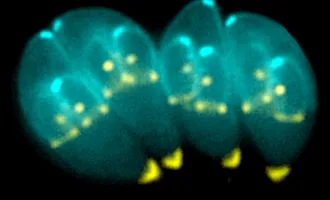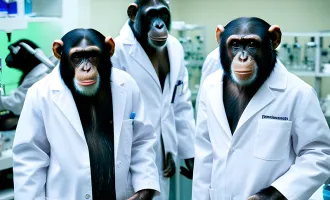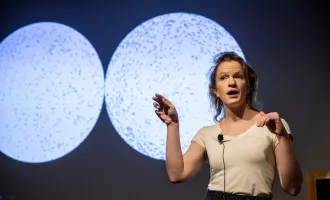Journal Club: Physiology, Cell Engineering, Biochemistry, Autoimmunity & Stem Cell Biology
PHYSIOLOGY: Lineage-negative progenitors mobilize to regenerate lung epithelium after major injury. Vaughan, A.E., et al. (Chapman, H.A.). Nature. 2014 Dec 24. Epub ahead of print.
In some organs, tissue growth and regrowth is driven by proliferation of an already mature cell; in other settings, it is driven by proliferation of progenitor cells, followed by maturation. Current models of lung epithelial regeneration argue for the first case, in which expanding mature cells support recovery.
However, in this paper, the Chapman lab identified a new, rare progenitor cell present in the normal lung. They found that these cells, which are quiescent under normal conditions, allow epithelial recovery in mice after lung injury from influenza infection or the chemical bleomycin.
These cells, once activated, proliferate and migrate to sites of injury and then differentiate into mature lung epithelium cells. The authors also discovered that Notch signaling is required for these cells to support this recovery.
CELL ENGINEERING: Engineering complex synthetic transcriptional programs with CRISPR RNA scaffolds. Zatalan, J.G., et al. (Lim, W.A.). Cell. 2014 Dec. 18. Epub ahead of print.
The CRISPR-Cas technology, which has developed in the past several years, was first used as powerful and easy way to make targeted changes to the genome. Since then, creation of Cas9 fusion proteins has allowed targeted activation or inactivation of genes of interest.
In this recent article, the authors have taken this to the natural next step, and used CRISPR-Cas to create an artificial regulatory network in which certain genes are activated and others inactivated, in a targeted fashion.
To the guide RNAs that usually target Cas to a particular part of the genome, they added sites that allow binding of fusion proteins with both RNA-binding and gene activating or repressing domains. By combining several of these with an inducible Cas9 protein, they were able to redirect a metabolic pathway in yeast.
BIOCHEMISTRY: Product binding enforces the genomic specificity of a yeast Polycomb repressive complex. Dumesic, P.A., et al. (Madhani, H.D.). Cell. 2014 Dec. 18. Epub ahead of print.
In eukaryotes, from yeast to humans, the DNA of the genome is bound by histone proteins. Modifications of these histones help control the activity of this DNA. For example, a histone modification abbreviated as H3K27me3 supports repression of gene activity. Control and targeting of the PRC2 complex that makes this H3K27me3 modification remains incompletely understood.
Now, Dumesic and colleagues have identified and characterized a yeast PRC2-like complex. This protein complex in Cryptococcus neoformans (there is no PRC2 homologue in the more frequently studied Saccharomyces) is essential for formation of H3K27me3 in this yeast.
They further found that this complex has a component that binds H3K27me3, and that in the absence of H3K27me3 binding, the complex instead associates with H3K9me3. That is, binding by the complex to its product reinforces localization of the complex’s activity to regions distinct from that of a different histone modification.
AUTOIMMUNITY & STEM CELL BIOLOGY: Tolerance induction and reversal of diabetes in mice transplanted with human embryonic-stem-cell-derived pancreatic endoderm. Szot, G.L., et al. (Bluestone, J.A.). Cell Stem Cell. 2014 Dec. 18. Epub ahead of print.
For the millions of patients with type 1 diabetes, there is no cure—only lifelong glucose monitoring and insulin injection to keep the disease largely at bay. One active area of diabetes research is aimed at developing ways to effectively transplant insulin-producing cells into patients to produce a durable cure.
Here, Szot and colleagues describe their use of human embryonic-stem-cell-derived cells to reverse diabetes in mice. After differentiating these ESCs into pancreatic endoderm, they transplanted them into diabetic mice and saw normal glucose levels result.
In this paper the authors found that blockade of the T-cell costimulation pathway—a more mild level of immunosuppression than is often used in transplantation--was enough to protect the transplanted cells. They were using mice in which a human immune system had previously been grafted.


